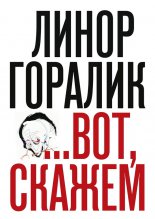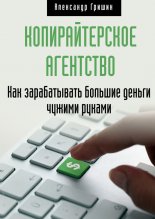Английский язык. Практический курс для решения бизнес-задач Пусенкова Нина

9. an estimate of the value of the cash flows of an investment project generated beyond the final point of the analysis and treated as a cash inflow in the final year of the analysis
10. shares of stock in a company that uses no debt
Exercise 3. Explain the meaning of the words «exposure», «exposed» in the following context and make sentences of your own using these words.
Aeroflot, Russia’s leading airline, offers attractively valued exposure to strong GDP growth in Russia and increasing disposable incomes.
Nowadays, many economies are increasingly exposed to the rigors of international competition.
Exercise 4*. Fill in the blanks using terms given below.
Company Upgrade. Aeroflot: Better Value All Round
The Aeroflot share price has reached our previous…… of USD1.0. We…….. the price for Russia’s largest airline by 15%, to USD1.15, and reiterate our Buy……..
The upgrade is based on strong 1Q04…….. results that significantly exceeded our expectations. We see three main reasons for this strong……..: (1) continuous growth of GDP and real…….. income per……. in Russia; (2) a strong ruble, which boosted overall…….; and (3) better services, aircraft (through fleet restructuring) and flight…….
We…… our 2004E passenger……. forecast for Aeroflot by 2.4%, and our revenue forecast by 4.3%.
We also revise our future cost…….. upwards, though to a lesser extent than our revenue forecast. Hence, our 2004E EBITDA forecast has increased by 9.4%, and net income by 15.4%, and we expect 2004 earnings to improve by about 33%…….. to USD136 million.
We have increased the…….. rate used in our model following the recent increase in the Russian…….. rate from below 6% to 6.5%. Our new Aeroflot…….. is 16%, compared with 14.3% previously.
Aeroflot has the lowest……. in 2003E and going forward among emerging market (EM) and developed market (DM) airlines. While many large European airlines……. losses in 2003, Aeroflot’s expected 2003 profit is above USD100 million.
The stock presently……. at a 44% discount on 2004E P/E and a 40% discount on EV/EBITDA relative to EM……., despite an 11.7% increase in Aeroflot’s share price since February. Aeroflot’s discounts to DM airlines on 2004E…… are 67% on P/E and 20% on EV/EBITDA.
Source: N. Zagvozdina, V. Tskhovrebov, Renaissance Capital, May 2004, www.aeroflot.ru
Terms:
WACC, consumption, trades, multiples, P/E, target, posted, upgrade, risk-free, disposable, schedules, turnover, year-on-year, recommendation, peers, operating, performance, capita, raise, projections, discount
Exercise 5. Translate into English.
Аэрофлот
Повышение ожидаемой через год цены акций на фоне новых макроэкономических прогнозов
Мы повышаем наши прогнозы прибыли на 2004—2005 гг.
В свете наших новых макроэкономических прогнозов, в частности ожидаемого дальнейшего укрепления рубля в номинальном и реальном выражении и замедления инфляции, мы повышаем наши прогнозы прибыли Аэрофлота на 2004—2005 гг. Мы также уменьшаем используемую ставку дисконтирования с 8,4% до 7,8%, что отражает снижение доходности суверенных еврооблигаций.
Мы повышаем ожидаемую через год цену акций Аэфролота до $0,85 и оставляем в силе рейтинг «держать».
Мы используем анализ, основанный на прогнозируемом оценочном коэффициенте, в качестве основной методики оценки Аэрофлота. В результате указанных выше изменений и повышения используемого нами оценочного коэффициента (обусловленного увеличением оценочных коэффициентов зарубежных аналогов Аэрофлота), мы повышаем ожидаемую через год цену акций Аэрофлота с $0,60 до $0,85. Поскольку избыточный доход по акциям компании составляет 3,5%, мы оставляем в силе рейтинг «держать».
Высокие операционные риски оправдывают дисконты.
Аэрофлот торгуется с EV/EBITDA и P/E на 2004 г., равными 4,5 и 6,2 соответственно, или с дисконтами в 26% и 47% к своим аналогам на развивающихся рынках. Мы считаем такие дисконты полностью оправданными, принимая во внимание высокий риск, связанный с операционной деятельностью Аэрофлота. В частности, нас беспокоит возможное сокращение/отмена выплачиваемых компании роялти, которые в 2004 г., по нашим оценкам, должны составить $259 млн. Кроме того, мы считаем, что наличие в совете директоров Аэрофлота представителей НРБ, который контролирует «Ильюшин Финанс Ко» и ВАСО (производитель самолета Ил-96), может привести к увеличению закупок воздушных судов российского производства, считающихся менее эффективными, чем западные суда.
Стимулом роста может стать более агрессивное сокращение расходов.
Мы полагаем, что к опережающему росту акций Аэрофлота может привести более быстрое, чем ожидалось, выполнение программы по сокращению расходов. Мы также считаем, что решение правительства об отсрочке отмены роялти может стать дополнительным стимулом.
Новые финансовые прогнозы
Мы пересматриваем нашу финансовую модель для Аэрофлота, что в основном обусловлено нашими новыми макроэкономическими прогнозами. Укрепление рубля практически не способствует повышению прибыли, поскольку в долларах компания получает примерно 54% от общей выручки и несет около 58% расходов. Согласно нашей модели, при использовании новых прогнозов среднегодового обменного курса, равных 28 руб./$ в 2004 г. и 27,5 руб./$ в 2005 г., выручка Аэрофлота увеличивается на 2% в 2004 г. и 3% в 2005 г. относительно прежних прогнозов. Позитивное влияние более высокой долларовой выручки должно частично компенсироваться ростом расходов на топливо, которые на данный момент составляют 20% от суммарных затрат (наша глобальная группа анализа нефтяного сектора повысила прогнозы средней цены на нефть марки Brent до $24,5/барр. на 2004 г. и $21,5/барр. на 2005 г.). В результате перечисленных изменений наш прогноз прибыли Аэрофлота возрастает с $133 млн до $139 млн в 2004 г. и со $115 млн до $127 млн в 2005 г.
Для оценки Аэрофлота мы используем анализ, основанный на прогнозируемом оценочном коэффициенте. Ранее мы использовали коэффициент EV/EBITDA на 2005 г., равный 4,0. Однако за последние месяцы акции зарубежных аналогов Аэрофлота сильно выросли в цене, и в результате средний показатель для компаний развивающихся рынков (GEM) увеличился с 5,5 до 6,1. Хотя мы по-прежнему считаем, что Аэрофлот должен торговаться с дисконтом к своим аналогам на GEM из-за низкой ликвидности и операционных рисков, мы переходим к использованию коэффициента, равного 4,5, что примерно соответствует изменению в оценочных коэффициентах компаний GEM. Для расчета ставки дисконтирования мы берем стоимость капитала, равную 7,8%.
Стоимость капитала представляет собой сумму доходности еврооблигаций с погашением в 2005 г., равной 2,84%, и премии за риск, равной 5%. В результате мы получаем справедливую стоимость акций компании через 12 месяцев в размере $0,85, что выше нашей прежней ожидаемой через год цены, равной $0,60, и означает прогнозируемый избыточный доход 3,5%. Как следствие, мы сохраняем рейтинг «держать» для Аэрофлота.
Источник: Brunswick UBS, Дмитрий Виноградов,
CFA, 22 января 2004 г., www.aeroflot.ru
Lesson 35
Successful Investment Strategy: Theory and Practice
Read and translate the texts and learn terms from the Essential Vocabulary.
Modern Portfolio Theory: An Overview
If you were to craft the perfect investment, you would want high returns coupled with little risk. The reality, of course, is that this kind of investment is next to impossible to find. Not surprisingly, people spend a lot of time developing methods and strategies that come close to the «perfect investment». But none is as popular, or as compelling, as modern portfolio theory (MPT).
The Theory
MPT was developed by Harry Markowitz and published in the 1952 Journal of Finance. MPT says that it is not enough to look at the expected risk and return of one particular stock. By investing in more than one stock, an investor can reap the benefits of diversification – chief among them, a reduction in the riskiness of the portfolio.
For most investors, the risk they take when they buy a stock is that the return will be lower than expected. In other words, it is the deviation from the average return. Each stock has its own standard deviation from the mean, which MPT calls «risk».
The risk in a portfolio of diverse individual stocks will be less than the risk inherent in holding any single one of the individual stocks (provided the risks of the various stocks are not directly related). Consider a portfolio that holds two risky stocks: one that pays off when it rains and another that pays off when it doesn’t rain. A portfolio that contains both assets will always pay off, regardless of whether it rains or shines. Adding one risky asset to another can reduce the overall risk of an all-weather portfolio.
Markowitz showed that investment is not just about picking stocks, but about picking winners, i.e. choosing the right combination of stocks among which to distribute one’s nest eggs.
Two Kinds of Risk
MPT states that the risk for individual stock returns has two components:
Systematic Risk – These are market risks that cannot be diversified away. Interest rates, recessions and wars are examples of systematic risks.
Unsystematic Risk – Also known as «specific risk», this risk is specific to individual stocks and can be diversified away as you increase the number of stocks in your portfolio (see Figure 1). It represents the component of a stock’s return that is not correlated with general market moves.
For a well-diversified portfolio, the risk of each stock contributes little to portfolio risk. Instead, it is the difference – or covariance – between individual stocks’ levels of risk that determines overall portfolio risk. As a result, investors benefit from holding diversified portfolios instead of individual stocks.
The Efficient Frontier
Now that we understand the benefits of diversification, the question of how to identify the best level of diversification arises. Enters the efficient frontier.
For every level of return, there is one portfolio that offers the lowest possible risk, and for every level of risk, there is a portfolio that offers the highest return. These combinations can be plotted on a graph, and the resulting line is the efficient frontier. Figure 2 shows the efficient frontier for two stocks – a high risk/high return technology stock (Google) and a low risk/low return consumer products stock (Coca Cola).
Any portfolio that lies on the upper part of the curve is efficient: it gives the maximum expected return for a given level of risk. A rational investor will hold a portfolio that lies somewhere on the efficient frontier. The maximum level of risk that the investor will take on determines the position of the portfolio on the line.
Figure 1
MPT takes this idea even further. It suggests that combining a stock portfolio that sits on the efficient frontier with a risk-free asset, the purchase of which is funded by borrowing, can actually increase returns beyond the efficient frontier. Thus, if you were to borrow to acquire a risk-free stock, then the remaining stock portfolio could have a riskier profile and, therefore, a higher return than you might otherwise choose.
Figure 2
What MPT Means for You
MPT has had a marked impact on how investors perceive risk, return and portfolio management. The theory demonstrates that portfolio diversification can reduce investment risk. Modern money managers routinely follow its precepts.
However, MPT has some shortcomings in the real world. It often requires investors to rethink notions of risk. Sometimes it demands that the investor take on a perceived risky investment (futures, for example) in order to reduce overall risk. That can be a tough sell to an investor not familiar with the benefits of sophisticated portfolio management techniques. Furthermore, MPT assumes that it is possible to select stocks whose individual performance is independent of other investments in the portfolio. But market historians have shown that there are no such instruments; in times of market stress, seemingly independent investments do, in fact, act as though they are related.
Likewise, it is logical to borrow to hold a risk-free asset and increase your portfolio returns, but finding a truly risk-free asset is another matter. Government-backed bonds are presumed to be risk free, but, in reality, they are not. Securities such as gilts and U.S. Treasury bonds are free of default risk, but expectations of higher inflation and interest rate changes can both affect their value.
Then there is the question of the number of stocks required for diversification. How many is enough? Investment guru William J. Bernstein says that even 100 stocks is not enough to diversify away unsystematic risk. By contrast, Edwin J. Elton and Martin J. Gruber, in their book «MPT and Investment Analysis», conclude that you would come very close to achieving optimal diversity after adding the twentieth stock.
Conclusion
The gist of MPT is that the market is hard to beat and that the people who beat the market are those who take above-average risk. It is also implied that these risk takers will get their comeuppance when markets turn down.
Then again, investors such as Warren Buffett remind us that portfolio theory is just that – theory. At the end of the day, a portfolio’s success rests on the investor’s skills and the time he or she devotes to it.
Source: March 14, 2006; By Ben McClure, investopedia
Warren Buffett: How He Does It
Did you know that a $10,000 investment in Berkshire Hathaway in 1965, the year Warren Buffett took control of it, would grow to be worth nearly $30 million by 2005? By comparison, $10,000 in the S&P 500 would have grown to only about $500,000. Whether you like him or not, Buffett’s investment strategy is arguably the most successful ever. With a sustained compound return this high for this long, it’s no wonder Buffett’s legend has swelled to mythical proportions. But how did he do it?
Buffett’s Philosophy
Warren Buffett descends from the Benjamin Graham school of value investing. Value investors look for securities with prices that are unjustifiably low based on their intrinsic worth. Determining intrinsic value can be a bit tricky as there is no universally accepted way to obtain this figure. Most often intrinsic worth is estimated by analyzing a company’s fundamentals. Like bargain hunters, value investors seek products that are beneficial and of high quality but underpriced.
Warren Buffett takes this value investing approach to another level. Many value investors aren’t supporters of the efficient market hypothesis, but they do trust that the market will eventually start to favor those quality stocks that were undervalued. Buffett doesn’t think in these terms. He isn’t concerned with the activities of the stock market.
He chooses stocks solely on the basis of their overall potential as a company. Holding these stocks as a long-term play, Buffett seeks not capital gain but ownership in quality companies extremely capable of generating earnings. When Buffett invests in a company, he isn’t concerned with whether the market will eventually recognize its worth; he is concerned with how well that company can make money as a business.
Buffett’s Methodology
Buffett finds low-priced value by asking himself some questions when he evaluates the relationship between a stock’s level of excellence and its price.
1. Has the company consistently performed well?
Sometimes return on equity is referred to as «stockholder’s return on investment». It reveals the rate at which shareholders are earning income on their shares. Buffett always looks at ROE to see whether or not a company has consistently performed well in comparison to other companies in the same industry.
Looking at the ROE in just the last year isn’t enough. The investor should view the ROE from the past five to 10 years to get a good idea of historical performance.
2. Has the company avoided excess debt?
Gearing is another key characteristic Buffett considers carefully. Buffett prefers to see a small amount of debt so that earnings growth is being generated from shareholders’ equity as opposed to borrowed money. Debt to equity ratio shows the proportion of equity and debt the company is using to finance its assets, and the higher the ratio, the more debt is financing the company. A high level of debt compared to equity can result in volatile earnings and large interest expenses.
3. Are profit margins high? Are they increasing?
The profitability of a company depends not only on having a good profit margin but also on consistently increasing this profit margin. This margin is calculated by dividing net income by net sales. To get a good indication of historical profit margins, investors should look back at least five years. A high profit margin indicates the company is executing its business well, but increasing margins means management has been extremely efficient and successful at controlling expenses.
4. How long has the company been public?
Buffett typically considers only companies that have been around for at least 10 years. As a result, most of the technology companies that have had their IPOs in the past decade wouldn’t get on Buffett’s radar (not to mention the fact that Buffett will invest only in a business that he fully understands, and he admittedly does not understand what a lot of today’s technology companies actually do). It makes sense that one of Buffet’s criteria is longevity: value investing means looking at companies that have stood the test of time but are currently undervalued.
Never underestimate the value of historical performance, which demonstrates the company’s ability (or inability) to increase shareholder value. Do keep in mind that the past performance of a stock does not guarantee future performance – the job of the value investor is to determine how well the company can perform, as well as it did in the past. Determining this is tricky, but evidently Buffett is very good at it.
5. Do the company’s products rely on a commodity?
Initially you might think of this question as a radical approach to narrowing down a company. Buffett, however, sees this question as an important one. He tends to shy away from companies whose products are indistinguishable from those of competitors, and those that rely solely on a commodity such as oil and gas. If the company does not offer anything different than another firm within the same industry, Buffett sees little that sets the company apart. Any characteristic that is hard to replicate is what Buffett calls a company’s economic moat, or competitive advantage. The wider the moat, the tougher it is for a competitor to gain market share.
6. Is the stock selling at a 25% discount to its real value?
This is the kicker. Finding companies that meet the other five criteria is one thing, but determining whether they are undervalued is the most difficult part of value investing, and Buffett’s most important skill. To check this, an investor must determine the intrinsic value of a company by analyzing a number of business fundamentals, including earnings, revenues and assets. And a company’s intrinsic value is usually higher than its liquidation value.
Once Buffett determines the intrinsic value of the company, he compares it to its current market cap. If his measurement of intrinsic value is at least 25% higher than the company’s market cap, Buffett sees the company as one that has value. Sounds easy, doesn’t it? Well, Buffett’s success depends on his unmatched skill in accurately determining this intrinsic value. While we can outline some of his criteria, we have no way of knowing exactly how he gained such precise mastery of calculating value
Conclusion
Buffett’s investing style, like the shopping style of a bargain hunter, reflects a practical, down-to-earth attitude. Buffett maintains this attitude in other areas of his life: he doesn’t live in a huge house, he doesn’t collect cars and he doesn’t take a limousine to work. The value-investing style is not without its critics, but whether you support Buffett or not, the proof is in the pudding. As of 2004, he holds the h2 of the second-richest man in the world, with a net worth of more $40 billion (Forbes 2004).
Source: April 22, 2005; investopedia
Essential Vocabulary
1. modern portfolio theory (MPT) – современная теория портфеля
2. standard deviation – стандартное отклонение
3. mean n – среднее значение, середина
4. inherent a – внутренний, внутренне присущий
5. picking winners – выбор победителей (выбор компаний с большим потенциалом развития как объекта капиталовложений)
6. nest eggs – деньги, откладываемые на «черный» день, для получения дохода после выхода на пенсию или для крупной покупки
7. systematic risk – систематический или рыночный риск
8. unsystematic (specific) risk – несистемный риск
9. covariance n – ковариация
10. efficient frontier – эффективная граница
11. risk-free – безрисковый
12. portfolio management – управление портфелем
13. gilts n, pl (gilt-edged securities) – ценные бумаги «с золотым обрезом» (первоклассные, самые надежные облигации)
14. risk taker – идущий на риск инвестор
15. compound a – начисляемый, кумулятивный, сложный (процент)
16. value investing – инвестиции в акции компаний с высокой дивидендной доходностью и низким отношением цены к прибыли
17.intrinsic a – внутренний
18. efficient market hypothesis (ЕМН) – гипотеза эффективного рынка (гипотеза, по которой при полном доступе рынка к информации цена акции на данный момент является лучшей оценкой будущей цены)
19. return on equity (ROE) – доходность собственного капитала
20. gearing n – отношение заемного капитала к собственному
21. kicker n – «завлекалочка» (дополнительное условие, повышающее привлекательность для инвестора)
22. liquidation value – ликвидационная ценность
Exercise 1. Answer the following questions.
1. What is the essence of the modern portfolio theory? 2. Why is the risk in a portfolio of diverse individual stocks less than the risk of holding a single individual stock? 3. What kinds of risk does MPT identify? 4. What is the efficient frontier? 5. What are the shortcomings of MPT? 6. Does MPT work well in practice? 7. What is Warren Buffet’s investment philosophy? 8. What are the questions that Warren Buffet asks when he evaluates stocks? 9. Can everybody become rich by using his methods?
Exercise 2*. Find terms in the text that match definitions given below and make sentences of your own with each term.
1. interest figured on both the initial principal and the interest earned in prior periods
2. investing in more than one type of asset in order to reduce risk
3. a market in which current market prices impound all available information and are a fair reflection of the true value of a financial asset
4. the use of debt or borrowing to finance investment
5. a measure of return on investment in which investment is defined as the net worth of the firm (profit after taxes divided by net worth)
6. an investor who will pay for the opportunity to gamble
7. the probability-weighted measure of the dispersion of possible outcomes around an expected value; a statistical measure of risk
8. the part of total risk that is related to the general economy or to the stock market as a whole; the risk that cannot be eliminated by diversification
9. the part of total risk that is unique to the company or asset; the risk that can be eliminated by diversification
Exercise 3. Discuss in class Warren Buffet’s criteria for selecting companies to invest in and the results of Buffet’s test for Rosneft (see below the analysis provided by Smart Money). Analyze other Russian companies in the same way and pass your own verdict.
Тест Баффета: «Роснефть»
Уоррен Баффет – самый успешный инвестор планеты. Для выбора объекта инвестиций он выработал собственные критерии. Специально для Smart Money аналитики Банка Москвы, ИК БКС и ИБ «КИТ Финанс» оценивают по этим критериям российские компании
Объект анализа: «Роснефть»
Штаб-квартира: Москва
Бизнес: добыча и переработка нефти и газа
Место в отрасли: 1-е (по добыче и переработке нефти в РФ)
Доля рынка:
23% (добыча нефти в РФ)
22% (переработка нефти в РФ)
Капитализация: $104,9 млрд
Выручка:[5] $49,2 млрд
Чистая прибыль:[6] $12,9 млрд
Президент: Сергей Богданчиков
Источник: «Роснефть», РТС, Банк Москвы
1. Достаточно ли информации о бизнесе компании? 4,00
Вполне. Регулярно публикуются ежеквартальная финотчетность по US GAAP, анализ результатов деятельности в отчете менеджмента.
2. Как компания проявила себя за последние годы? 5,00
Компания демонстрирует положительные темпы роста добычи даже без учета новых приобретений. Присоединив в 2007 г. активы ЮКОСа, эмитент заметно улучшил производственную структуру.
3. Есть ли долгосрочные перспективы? 4,67
Безусловно. «Роснефть» готовит к запуску Ванкорский проект, который должен стать основой для поставок нефти по трубопроводу Восточная Сибирь – Тихий океан. Активы в сахалинских проектах в обозримом будущем станут хорошей ресурсной базой.
4. Действуют ли менеджеры компании рационально? 4,00
В целом да. Но «Роснефть» – госкомпания, поэтому зачастую действия менеджеров подчинены интересам государства, а не логике бизнеса.
5. Открыты ли менеджеры? 3,67
Менеджеры «Роснефти» вполне открыты. Но комментарии в основном носят общий характер, конкретику получить сложно.
6. Ставят ли менеджеры интересы акционеров выше своих? 4,00
В планах компании – запуск опционной программы поощрения менеджмента. Пока руководство должным образом не будет мотивировано, сложно рассчитывать на то, что при принятии решений всегда будут учитываться интересы миноритариев – в частности, по увеличению капитализации.
7. Насколько рентабельна компания? 4,67
Рентабельность по EBITDA и чистой прибыли в 2007 г. составила 28 и 26% (в 2006 г. – 22 и 11%), что сопоставимо с компаниями-аналогами. В 2008 г. норма EBITDA и чистой прибыли ожидается на уровне 25—26% и 16—17%.
8. Достаточен ли свободный денежный поток для акционеров? 3,67
По итогам 2007 г. FCF (без учета конкурсного производства от НК ЮКОС) составил $3 млрд. Показатель за 2006 г. – $2,1 млрд. На дивиденды «Роснефть» направляет 13% чистой прибыли (другие представители отрасли – 17—20%).
9. Какова отдача на вложенный капитал? 4,27
По итогам 2007 г. ROE составила 58,8% (в 2006 г. – 47,5%). Рост за прошедший год вызван как увеличением объемов добычи и переработки, так и разовым доходом, связанным со взысканием долга с предприятий ЮКОСа. В 2008 г. прогнозируется снижение показателя до 20,3%.
10. Есть ли у компании явное конкурентное преимущество? 4,67
К преимуществам «Роснефти» можно отнести ресурсную базу: компания обладает самыми большими запасами углеводородов в России.
11. Какова справедливая цена акций компании? 3,93
Справедливая цена одной акции «Роснефти» составляет $14,11, потенциал роста – 46%, рекомендация – покупать.
ИТОГО: 4,25
Вердикт Smart Money: Баффет купит.
Источник: Smart Money, 21 апреля 2008 г.
Exercise 4*. Find antonyms for the following terms and make sentences of your own with each pair.
Example: call option – put option
high-grade bond —……
risk tolerant —……..
free trade —……..
appreciation —……….
ask price —………….
bull market —………
debt financing —……….
assets —……….
buy-side —……….
executive directors —………
Exercise 5*. Fill in the blanks using terms given below.
What’s Better, Value or Growth… Well, it Depends
There has recently been significant media interest in analyzing…… managers’ investment styles and the way this influences their funds’ returns. Some media attention has focused on determining which is the ‘best’ investment style, in particular, predicting which style will suit the current investment……
Selecting a manager based on their consistent approach to investing, their investment capabilities and an ability to complement other managers is sound investment…….
Value and Growth Investing in Theory
A manager’s style (or philosophy) is a reflection of their…….. approach to investing. A value manager aims to determine the most appropriate price they should pay for a security relative to the…….. that security can produce over time.
Value managers believe that markets are affected by many factors including emotion, and shares can trade above and below their……. value at certain times. They aim to exploit market conditions, searching for…….. shares, buying them when they represent good value and selling once they become……..
Growth managers, on the other hand, concentrate on shares that focus on providing…….. future growth, with less em on their current price.
Does it Work in Practice?
Traditionally, it was possible to determine a manager’s investment style based on the shares held in their…….. Recently, however, this distinction has become blurred. A growth manager, for example, would rarely admit to buying overpriced stocks simply for their…….. potential. Similarly, a value manager would not purchase a stock because it was………. if it didn’t show signs of profit growth. Most managers rely on their rigorous……… and analysis techniques and their selection……. to determine which shares to purchase or sell – regardless of whether they have been categorized as value or growth shares in the past.
Many factors affect share prices, including investor……. At times, certain shares will appear cheap or expensive depending on the……. placed on them by the market. Technology or telecommunications shares, for example, have been categorized as growth shares because of the strong…….. they have provided in recent times and the expectation of continued strong growth in the future. Does this mean that they can not become part of a value manager’s portfolio? Not necessarily. As well as growth potential, a value manager would judge these shares based on their ability to deliver an appropriate income……. relative to their current price, their sound business……. and long term…….
As a result, value and growth managers may…… similar shares, but at different times. One benefit of including both investment styles in your portfolio is…….. that this creates. Value and growth styles can complement each other, resulting in better overall…….. of your investment.
What’s Better – Value or Growth?
One investment style is no better or worse than another – they are just different. When selecting appropriate portfolios for your clients, diversification between…….. classes is important. However, another…….. to diversification can be achieved in your portfolio by selecting managers with different investment styles.
Source: www.rothschild.com.au
Terms:
diversification, outlook, returns, bargain-priced, sentiment, hold, dimension, asset, fund, upside, environment, screening, practices, income, advice, fundamental, fair, overpriced, superior, portfolios, undervalued, criteria, value, stream, performance
Exercise 6. Translate into English.
В чем секрет «Оракула из Омахи»?
Инвестиционные принципы Уоррена Баффета
Уоррен Баффет, по убеждению большинства его коллег, – самый удачливый инвестор, который сделал свой капитал, инвестируя в акции. Впрочем, слово «удача» здесь, вероятно, не самое уместное. В выборе акций Баффет придерживается исключительно фундаментального анализа – он выбирает акции по финансовым и производственным показателем компаний-эмитентов. Он покупает не просто акции, а успешный бизнес, который стоит за этими ценными бумагами. При этом Баффет предпочитает те акции, которые, по его мнению, на момент покупки недооценены. Безусловно, Баффет долгосрочный инвестор – в среднем он держит акции 10 лет. И, по его словам, его не волнует, что случится на бирже после того, как он купил акции. По его собственному признанию, хорошие акции он будет держать ровно столько, сколько эти акции будут способны приносить прибыль. Продавать раньше времени он их не будет, и это, возможно, несколько снижает финансовые показатели Berkshire Hathaway – так считает сам Баффет.
«Основной секрет успешного инвестирования, – говорит Баффет, прозванный „Оракулом из Омахи“ за свое инвестиционное чутье, – выбрать хорошие акции в нужное время и держать их до тех пор, пока эти акции остаются хорошими».






